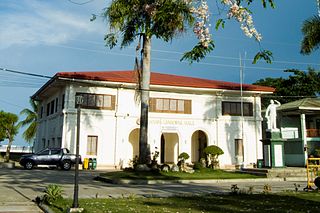
Sibonga, officially the Municipality of Sibonga, is a 3rd class municipality in the province of Cebu, Philippines. According to the 2020 census, it has a population of 53,424 people.
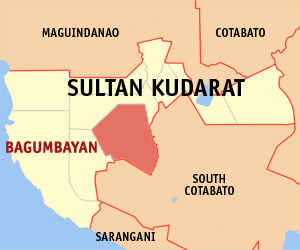
Bagumbayan, officially the Municipality of Bagumbayan, is a 1st class municipality in the province of Sultan Kudarat, Philippines. According to the 2020 census, it has a population of 68,947 people.

Braulio E. Dujali, officially the Municipality of Braulio E. Dujali, or simply referred to as Dujali, is a 4th class municipality in the province of Davao del Norte, Philippines. According to the 2020 census, it has a population of 35,729 people.

Carmen, officially the Municipality of Carmen, is a 1st class municipality in the province of Davao del Norte, Philippines. According to the 2020 census, it has a population of 82,018 people.

Talaingod, officially the Municipality of Talaingod, is a 2nd class municipality in the province of Davao del Norte, Philippines. According to the 2020 census, it has a population of 28,333 people.

New Corella, officially the Municipality of New Corella, is a 2nd class municipality in the province of Davao del Norte, Philippines. According to the 2020 census, it has a population of 57,913 people.

Laak, officially the Municipality of Laak, is a 1st class municipality in the province of Davao de Oro, Philippines. According to the 2020 census, it has a population of 79,744 people.

Maco, officially the Municipality of Maco, is a 1st class municipality in the province of Davao de Oro, Philippines. According to the 2020 census, it has a population of 83,237 people.

Maragusan, officially the Municipality of Maragusan, is a 1st class municipality in the province of Davao de Oro, Philippines. According to the 2020 census, it has a population of 64,412 people.

Pantukan, officially the Municipality of Pantukan, is a 1st class municipality in the province of Davao de Oro, Philippines. According to the 2020 census, it has a population of 90,786 people.

Nabunturan, officially the Municipality of Nabunturan, is a 1st class municipality and capital of the province of Davao de Oro, Philippines. According to the 2020 census, it has a population of 84,340 people.
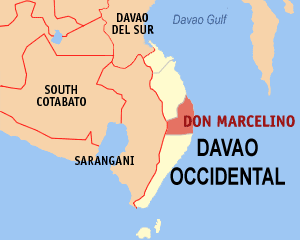
Don Marcelino, officially the Municipality of Don Marcelino, is a 3rd class municipality in the province of Davao Occidental, Philippines. According to the 2020 census, it has a population of 45,540 people.

Hagonoy, officially the Municipality of Hagonoy, is a 3rd class municipality in the province of Davao del Sur, Philippines. According to the 2020 census, it has a population of 56,919 people.

Magsaysay, officially the Municipality of Magsaysay, is a 3rd class municipality in the province of Davao del Sur, Philippines. According to the 2020 census, it has a population of 56,263 people.
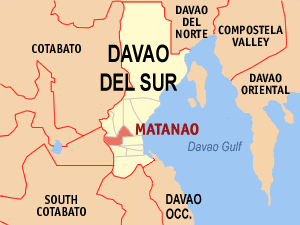
Matanao, officially the Municipality of Matanao, is a 2nd class municipality in the province of Davao del Sur, Philippines. According to the 2020 census, it has a population of 60,493 people.
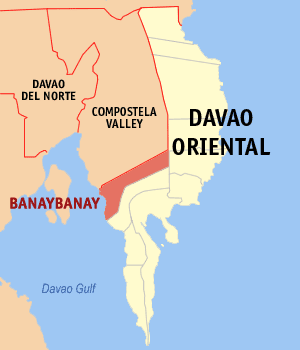
Banaybanay, officially the Municipality of Banaybanay, is a 2nd class municipality in the province of Davao Oriental, Philippines. According to the 2020 census, it has a population of 44,451 people.

Boston, officially the Municipality of Boston, is a 3rd class municipality in the province of Davao Oriental, Philippines. According to the 2020 census, it has a population of 14,618 people.

Governor Generoso, officially the Municipality of Governor Generoso, is a 2nd class municipality in the province of Davao Oriental, Philippines. According to the 2020 census, it has a population of 59,891 people.
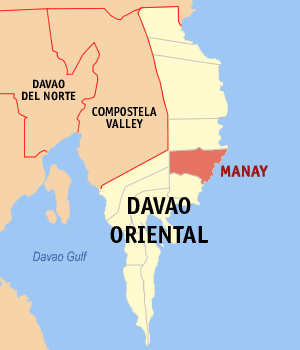
Manay, officially the Municipality of Manay, is a 2nd class municipality in the province of Davao Oriental, Philippines. According to the 2020 census, it has a population of 39,572 people.
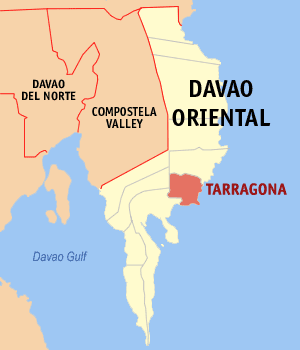
Tarragona, officially the Municipality of Tarragona, is a 3rd class municipality in the province of Davao Oriental, Philippines. According to the 2020 census, it has a population of 26,996 people.























